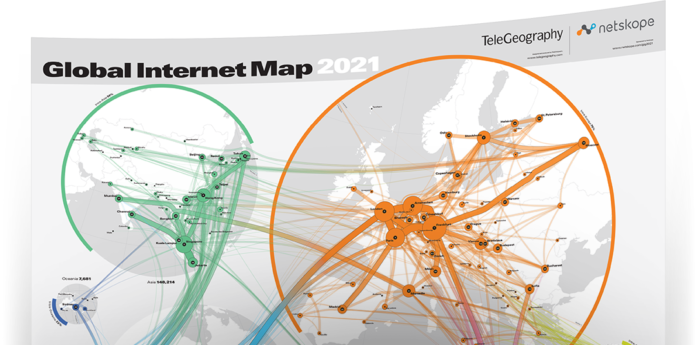International internet capacity grew by 35% from around 450 Tbps in 2019 to over 600 Tbps in 2020, according to TeleGeography’s 2021 Global Internet Map which was sponsored by Netskope.
The report covers the aggregate number of exchanges in each country and the number deployed by region over the past five years.
Key projections include intraregional internet bandwidth, metro-to-metro area internet bandwidth, metro area internet bandwidth and the top 50 metro areas ranked.
“Our latest data shows that global capacity and internet traffic surged in 2020, mostly driven by the widespread remote work and learning, with more people relying on the internet than ever before,” said Anahí Rebatta, senior analyst at TeleGeography.
“It’s a great feeling to release a new map and share all of these insights with the industry,” she said. “And this year we’re layering in even more cloud infrastructure data, including six new cloud service provider maps showing active and planned cloud regions, number of availability zones, and on-ramps.”
The report shows that Europe is the region with the highest regional capacity, and has also seen the largest growth from 2019 to 2020.
Peak international internet traffic increased at a CAGR of 30% between 2016 and 2020 while average international internet traffic increased from around 120 Tbps to 170 Tbps from 2019 to 2020.
The peak traffic growth rate for 2019 to 2020 was forecast at 28%, however the observed level for the same period was much higher, at 47%.
“The disruptions the world saw in 2020 showed the mission-critical nature of the internet and the value it delivers to both businesses and people,” said Joe DePalo, SVP of platform engineering at Netskope.
“Visibility and insights are vital components of any digital transformation journey, and through the sponsorship of this map we aim to help more businesses respond to global trends and secure their networks,” said DePalo.
















